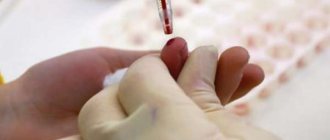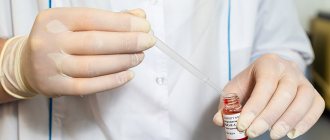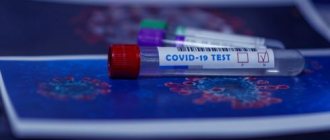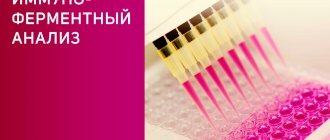The most common diagnostic procedure that is performed when visiting a doctor of any specialization is a blood test. It is the blood that reacts very quickly to any changes occurring in the body. By changes in its composition, inflammatory processes can be detected, serious diseases can be suspected and identified at an early stage.
Using a general blood test, the number of formed elements (leukocytes, red blood cells, platelets) is determined and, based on a comparison of the results obtained with existing standards, conclusions are drawn about the state of health.
The PLT blood test is a test for platelet levels. This indicator is one of the main ones and is of great importance in laboratory diagnostics.
What are platelets?
These elements are formed in the bone marrow and are small, round, irregularly shaped plates that lack nuclei. The function of these particles is very important: they are involved in the process of blood clotting and regeneration of damaged tissue, that is, they help prevent large blood losses in the event of vascular damage. The cells live for no more than 10 days, after which they are destroyed in the spleen and liver, and they are replaced by new ones.
The platelet count changes throughout the day. They are increased during physical activity. During pregnancy and menstruation, their number, on the contrary, decreases. Such changes are considered natural, and platelet levels return to normal at rest, at the end of menstruation, or after childbirth.
In other cases, deviations from the norm in any direction indicate some kind of pathology. A condition in which platelets are elevated is called thrombocytosis, and if they are low, it is called thrombocytopenia.
Elevated platelets in the blood
An increased amount of plt in a general blood test is called thrombocytosis.
The level of blood platelets exceeds 320x10x9/liter. Thrombocytosis is accompanied by a high risk of blood clots in various organs. Thrombocytosis itself does not have significant symptoms. When a blood clot forms, the blood supply to the organ where it is located is disrupted. The function of the organ is impaired. If it is the brain, a stroke develops. A blood clot in the heart leads to myocardial infarction. A blood clot in the pulmonary arteries causes death within minutes.
Causes of increased platelets
There are two mechanisms for increasing platelet levels:
- primary, when many megakaryocytes are formed in the bone marrow;
- secondary, arising against the background of any disease.
Primary plt in a blood test is increased when:
- essential thrombocythemia, the cell level increases to 2000-4000x109/liter;
- erythremia;
- chronic myeloid leukemia.
Secondary causes of high platelet counts:
- rheumatism;
- rheumatoid arthritis;
- tuberculosis;
- chronic liver diseases;
- inflammation of the intestines with the formation of ulcers;
- bone inflammation;
- some types of cancer.
Platelets increase after severe bleeding, extensive surgery, or removal of the spleen.
What to do when plt level increases
Diseases accompanied by primary thrombocytosis are treated with hormonal drugs, radiation, and blood transfusions. Rheumatism is treated with antibiotics. For rheumatoid arthritis, steroids and NSAIDs are prescribed. Inflammatory diseases are treated with antibiotics, antiviral drugs, and steroids.
There is no special diet to reduce the number of blood platelets. It is recommended to limit the consumption of tomatoes. The diet is enriched with fresh vegetables and fruits, and red meat must be present.
Interpretation of the blood test on PLT
Decoding the analysis is within the competence of the attending physician. Thrombocytosis or thrombocytopenia may be the first signs of various pathologies.
The platelet level is determined during a general blood test
If the level of platelets in the blood exceeds normal values, the development of the following diseases can be assumed:
- Blood poisoning.
- Lymphogranulomatosis.
- Stomach cancer.
- Malignant blood diseases.
- Consequences of severe blood loss.
- Consequences of surgery to remove the spleen (thrombocytosis persists for two months).
- Chronic diseases: colitis, tuberculosis, rheumatoid arthritis and others.
Thrombocytopenia may indicate the following pathological conditions:
- Leukemia (chronic and acute).
- Werlhof's disease, or thrombocytopenic purpura.
- Systemic connective tissue diseases: scleroderma, lupus erythematosus, dermatomyositis.
- Folate deficiency anemia.
- Increased activity of the spleen in hepatitis (chronic, viral), liver cirrhosis.
- Taking certain medications.
- Viral infections: influenza, rubella, chickenpox, measles.
- Endocrine diseases: hypothyroidism, thyrotoxicosis.
- Metastases in the bone marrow in cancer.
- Aplastic and hypoplastic conditions of unknown origin, in which there is a decrease in platelet formation in the bone marrow.
Decreased platelet levels
Low platelet levels, the norm of which differs between men and women, provoke the development of a condition known as thrombocytopenia. Very often it occurs against the background of uncontrolled use of medications: antidepressants and antibiotics.
The reasons for a decrease in the level of platelets in the blood can be various infectious diseases: ARVI, hepatitis, herpes, etc. Thrombocytopenia can be observed when a large number of blood thinning products are included in the diet. These are ginger, cherries, garlic, onions, etc.
Non-infectious factors that reduce the level of platelets in the blood include pregnancy, vitamin deficiency, alcohol or heavy metal poisoning.
Thrombocytopenia can be suspected based on the following signs:
- Heavy menstruation.
- Frequent nosebleeds.
- The appearance of hematomas.
With a constant pathological decrease in the level of platelets in the blood, the risks of developing severe bleeding and stroke conditions, which are life-threatening, increase.
Testing for PLT in children
Monitoring blood composition, including PLT levels, is especially important in childhood. If this indicator drops below normal, the following diseases can be assumed:
- allergic reactions to medications;
- intoxication;
- thyrotoxicosis;
- blood diseases;
- parasitic and viral infections.
The causes of elevated PLT levels in children are varied. There are primary and secondary thrombocytosis. The first is due to the fact that brain stem cells produce an excess amount of platelets with an altered structure, which, for example, is observed in leukemia.
Secondary, or reactive, develops as a result of some pathological process, which disrupts the production of these cells, as well as their structure and shape. Factors in the development of reactive thrombocytosis include:
- heavy operations;
- splenectomy;
- sudden bleeding;
- osteomyelitis;
- anemia;
- fractures of tubular bones;
- pulmonary infections;
- malignant diseases;
- some drugs.
Video about the functions of platelets and the reasons for changes in their number in the blood:
Thrombocytosis is a significant increase in the number of platelets in the blood, which disrupts the properties of the blood and increases the likelihood of thrombosis (blockage) of blood vessels. Platelets are cells that are responsible for blood clotting.
Thrombocytosis can be either an independent disease or a consequence of a number of diseases of the blood or any organs.
Primary thrombocythemia occurs most often in people over 60 years of age. The prognosis is favorable - the life expectancy of patients with primary thrombocytosis with proper observation and treatment is practically no different from that of healthy people.
Young children are more susceptible to secondary thrombocytosis. The platelet count usually returns to normal after recovery from the underlying illness.
Synonyms Russian
Essential thrombocythemia, primary thrombocythemia, secondary thrombocythemia, thrombocytophilia, chronic thrombocythemia, chronic megakaryocytic leukemia, idiopathic thrombocythemia.
English synonyms
Primary thrombocythemia, essential thrombocythemia, idiopathic thrombocythemia, primary thrombocytosis, essential thrombocytosis, secondary thrombocytosis, reactive thrombocytosis, secondary thrombocythemia.
Symptoms
Symptoms usually develop gradually and may be absent in the initial stages of the disease. The main manifestations of thrombocytosis are caused by two factors: the formation of blood clots in blood vessels and increased bleeding. With secondary thrombocythemia, the likelihood of these disorders is lower, since the number of platelets is lower than with primary thrombocythemia.
The main symptoms of thrombocytosis:
- headache,
- pain in the hands and feet, their numbness,
- weakness, irritability,
- visual impairment,
- bleeding gums,
- nosebleeds,
- blood in the stool.
General information about the disease
Platelets are small, colorless plates that do not contain a nucleus. They are formed in the bone marrow and are “fragments” of megakaryocytes - giant multinucleated cells. From the bone marrow, platelets enter the blood, and some of them are retained in the spleen. They exist for about 7-10 days and are then destroyed by liver and spleen cells. Platelets are responsible for blood clotting and stopping bleeding. Their normal amount in the blood is 150-450×109/l.
There are two types of thrombocytosis.
1. Primary thrombocytosis. In this case, an increased number of megakaryocytes is formed in the bone marrow, which increases the number of platelets that have a normal life expectancy, but an abnormal structure and impaired functions. Platelets are large, and there is an increased tendency to form clots that block blood vessels and cause bleeding. Bleeding occurs due to disruption of platelet adhesion, and also due to the fact that most of them can be used to form blood clots. This can lead to serious complications: stroke, myocardial infarction, gastrointestinal bleeding. The causes of impaired division of megakaryocytes in the bone marrow are not fully known, however, there is information about the presence of a mutation in the V617F gene in patients. Primary thrombocytosis refers to myeloproliferative diseases in which the hematopoietic function of the bone marrow is disrupted, which stimulates the formation of blood cells.
2. Secondary (reactive) thrombocytosis. With it, platelets function normally, and the cause of the disease itself is some other abnormality, one of the following.
- Oncological diseases, most often cancer of the stomach, lungs, ovaries. Tumor cells secrete biologically active substances that activate platelet production.
- Response to irritation of the bone marrow by substances that are released by damaged tissues during: infectious diseases, most often bacterial, less often parasitic, fungal and viral,
- fractures of large bones (femur, humerus, pelvic bones),
- extensive surgical operations.
Such thrombocytosis always does not last long and disappears when the patient’s condition normalizes.
- Splenectomy – removal of the spleen. In this case, thrombocytosis is associated with the entry into the blood of those platelets that are normally found in the spleen, as well as with a decrease in the amount of substances synthesized by the spleen and inhibiting the formation of platelets in the bone marrow.
- Acute or chronic bleeding. Acute occurs suddenly and is caused by trauma, surgery, chronic lasts a long time and can accompany a stomach or duodenal ulcer, or intestinal cancer. As a result of blood loss, iron deficiency anemia occurs, that is, a decrease in the amount of hemoglobin, red blood cells and iron included in their composition. The mechanism of development of thrombocytosis in response to iron deficiency has not been fully studied. Another factor is important in this case: during blood loss, the production of red blood cells in the bone marrow is activated. The process of more active division also involves megakaryocytes, that is, the number of platelets in the blood increases. In addition, thrombocytosis is a natural response of the body, which needs additional platelets to stop bleeding.
- Chronic inflammation (colitis - inflammation of the large intestine, vasculitis - inflammation of the walls of blood vessels, rheumatoid arthritis - inflammatory disease with joint damage), in which interleukin-6 is released - an active substance that stimulates the formation of thrombopoietin, which promotes the division of megakaryocytes and the formation of platelets.
- Taking medications: glucocorticosteroids (synthetic analogs of adrenal hormones), chemotherapy drugs (vincristine).
- Recovery from thrombocytopenia caused by vitamin B12 deficiency and alcohol. Thrombocytosis in this case occurs as a response to thrombocytopenia therapy.
The likelihood of clots and bleeding with secondary thrombocytosis is lower than with primary thrombocytosis.
Who is at risk?
- People over 60 years of age (for primary thrombocytosis).
- Children (for secondary thrombocytosis).
- Patients with iron deficiency anemia.
- Having undergone surgery, severe injuries.
- Suffering from cancer.
Diagnostics
Thrombocytosis is often asymptomatic. A doctor may suspect it during a routine checkup. An important point in diagnosis is to determine the type of thrombocytosis - primary or secondary. In the case of secondary thrombocytosis, the doctor may prescribe a number of additional studies necessary to determine its cause.
Laboratory diagnostics
- Complete blood count with leukocyte formula. With thrombocytosis, the platelet level is elevated. In primary thrombocytosis, it can even exceed one million per microliter (1000×109/l), which is not typical for secondary thrombocytosis. In addition, with primary thrombocytosis, the number of other blood elements is sometimes increased: leukocytes, lymphocytes, erythrocytes. In secondary thrombocytosis, blood characteristics depend on the underlying disease, for example, during infection, the level of leukocytes may be increased. In primary thrombocytosis, large, irregularly shaped platelets are detected in the blood smear; fragments of megakaryocytes, as well as single immature leukocytes, can occasionally be found; in secondary thrombocytosis, platelets are usually not changed.
- ESR – erythrocyte sedimentation rate. May be elevated due to inflammation that causes reactive thrombocytosis.
- Ferritin is an iron-binding protein. Its level indicates the amount of iron in the body. With secondary thrombocytosis caused by iron deficiency anemia, it is reduced.
- Molecular genetic studies - identification of possible genetic disorders. With primary thrombocytosis, the structure of the gene (DNA section) JAK2V617F may be disrupted.
Additional Research
- Bone marrow biopsy is the removal of a sample of bone marrow from the breastbone or pelvis using a fine needle. It is carried out after preliminary anesthesia. In primary thrombocytosis, an increased number of megakaryocytes may be found in the bone marrow. A bone marrow biopsy is also necessary to exclude malignant blood diseases, the first sign of which may be thrombocytosis.
- Ultrasound of the abdominal organs to identify possible internal bleeding.
Treatment
Treatment of primary thrombocytosis depends on the risk of complications - thrombosis and bleeding. This is determined by age, the presence of concomitant diseases (for example, diabetes, cardiovascular diseases), and platelet levels. If the likelihood of complications is high, then use:
- drugs that suppress the production of cells in the bone marrow,
- aspirin - it thins the blood, which reduces the likelihood of blood clots,
- therapeutic thrombopheresis - in this case, using a special device, the patient’s blood is filtered to remove excess platelets.
Treatment of secondary thrombocytosis is determined by its immediate cause. As a rule, when the patient recovers from the underlying disease, the platelet level returns to normal. In addition, long-term secondary thrombocytosis can develop after splenectomy, then the patient is prescribed small doses of aspirin or drugs containing it to prevent complications.
Prevention
There is no prevention for primary thrombocytosis.
Prevention of secondary thrombocytosis consists of preventive examinations and timely identification of diseases that can lead to a secondary increase in the number of platelets.
Recommended tests
- General blood analysis
- Leukocyte formula
- Erythrocyte sedimentation rate (ESR)
- Coagulogram No. 1 (prothrombin (according to Quick), INR)
- Ferritin
- Cytological examination of punctates, scrapings of other organs and tissues
Indications for the study
Adults should be attentive to small children. They cannot always explain their unusual symptoms on their own.
That is why adults should immediately seek advice from a pediatrician if their child suddenly develops the following undesirable symptoms:
- constant bleeding gums;
- frequent nosebleeds;
- bruises on the body that appear for unknown reasons;
- frequent numbness of the limbs;
- general weakness;
- frequent complaints of headache and dizziness.
Symptoms of increase and decrease
The child's PLT is reduced, which can be indicated by hemorrhages under the skin that appear even with minor trauma or slight compression of soft tissues.
Other symptoms may also indicate a decrease in platelets in the blood:
- frequent appearance of bruises;
- pinpoint rash on the body;
- hemorrhage in the mucous membranes;
- bleeding gums.
If the level decreases sharply and quite quickly, spontaneous bleeding in the organs may occur. If platelets are elevated, the condition is called thrombocytosis and in most cases it is asymptomatic.
And if symptoms appear, they are caused by blockage of blood vessels by blood clots and this condition manifests itself in the form of:
- local increase in temperature in the extremities, often accompanied by severe pain;
- tingling or any other discomfort in the palms, fingers or feet;
- discomfort in the chest area;
- loss of consciousness or strange spots flashing before the eyes;
- headache;
- general weakness;
- dizziness.
Frequent bleeding from the nose, gums and digestive system may also occur.
Reasons for the decline
{banner_banstat10}
A similar condition occurs no less often. Among the development factors.
Hepatitis
Inflammatory liver damage. Accompanied by acute dysfunction of the organ. In the chronic phase it is not so dangerous.
Among the symptoms:
- Pain in the right side of the abdomen.
- Nausea.
- Vomit.
- Change in color of stool.
- Diarrhea, constipation.
- Digestive disorders.
- Bitter taste in the mouth.
- Increased body temperature (not always).
The disease is progressing. Not at the same speed, but steadily. If nothing is done, necrotic changes will begin.
The condition is corrected under the supervision of a hepatologist. When such a narrow specialist is not available, a gastroenterologist is involved. The goal is to slow down, and ideally stop, change altogether. Protective drugs are prescribed.
Be sure to prescribe a gentle diet low in animal fat. If hepatitis is of infectious origin, you cannot do without special antiviral medications.
The prognosis for systematic treatment is positive, PLT concentration will recover quickly.
Cirrhosis of the liver
Necrotic process. Characterized by the death of organ tissue. In the acute phase, days and even hours count. It is necessary to transport the patient to the hospital. Then carry out urgent correction.
The clinical picture corresponds to that of hepatitis, only more severe. Problems begin with the nervous system and hematopoietic structures.
Among the manifestations:
- Pain in the right side.
- Impaired consciousness.
- Nausea.
- Vomit.
- Decline in cognitive level and intellectual abilities.
- Discoloration of stool.
- Diarrhea or constipation.
- Bleeding.
- The formation of spider veins on the body.
Chronic forms allow more time for treatment. Therapy consists of using protectors. We must do everything we can to stop the progression of the disease.
At the initial and middle stages of the pathological process, there is a chance of a liver transplant. The operation can only be successful during these periods.
In the decompensated stage, transplantation will make little sense. Bleeding begins and surgery is no longer possible. The disease is serious and must be dealt with quickly.
PLT decreases because cells die and new ones are not produced in sufficient quantities.
Thyroid disorders
Pathologies in which too much hormones T3 and T4 are synthesized. The lifespan of platelets in this case is significantly reduced. Hematopoiesis slows down. This is the reason for the deficiency of red PLT plates.
Pathology is treated under the supervision of an endocrinologist. The task is not quick, it takes several months. Iodine preparations are prescribed, as well as a diet low in this element.
Radiation sickness
As such, it inhibits the normal functioning of the bone marrow. This just ends with insufficiently rapid platelet maturation.
Attention:
The same is possible with a systematic, but weak influence of radiation. For example, when performing X-rays, CT scans too often.
Treatment
Regarding symptomatic correction:
With elevated platelets
It is necessary to eliminate the primary cause of the pathological process. These are the diseases that were described earlier. There is no need to fight the platelets themselves. The task is to remove the primary factor. It is better to address this question to a specialized specialist.
Symptomatic correction is to prevent the formation of blood clots. Anticoagulants or antiplatelet agents are prescribed.
At low
The same. Etiotropic treatment is necessary. Fighting the primary cause.
Prevention
Preventive measures are extremely simple. It is enough to follow simple recommendations:
- Regularly undergo inspections. Every six months or a little less often.
- Eat well. To prevent the development of anemia and deficiency diseases.
- Treat pathologies of any profile in a timely manner. Even an old source of infection can present an unpleasant surprise.
- Eliminate alcohol from your life.
- Do not self-medicate.
PLT stands for platelet, which means platelets in English. The indicator is informative, but it needs to be clarified by other methods. This way you can quickly detect health problems.
Additional examinations
Ancillary measures are aimed at establishing the origin of the pathology.
Among the techniques:
- Oral interview with the patient.
- Anamnesis collection.
- Ultrasound of the digestive tract.
- MRI as needed.
- Blood and urine tests: general, biochemical. For hormones.
- Coagulogram.
This is a basic diagnostic checklist. Based on its results, specialized examinations are prescribed at the discretion of the doctor.
How to get it back to normal
Parents cannot always independently determine the level of platelets in their child’s blood, which is why it is recommended to take a general blood test 1-2 times a year, and in some cases more often, so that you can monitor the indicators. If platelets are not normal, then it is very important for parents not only to undergo therapy, which is selected by a specialist in each individual case, but also to adhere to some precautions:
- try to protect the child from possible injury by protecting him from active games associated with the risk of bruising;
- Replace the toothbrush with a softer and more gentle one;
- handle sharp objects with care;
- exclude taking blood thinning medications unless the doctor has prescribed them and he is completely sure that he simply needs them, for example, with a low platelet level;
- Pay attention to any hemorrhage and bleeding, and if necessary, immediately seek qualified medical help.
High rate
If PLT is significantly higher than the established norm for a given age category of children, then the main reason for this condition should be sought in the general health of the baby. A high platelet count can be brought back to normal with the help of medications that can thin the blood.
The most effective and safest drugs for young patients are those based on acetylsalicylic acid, for example, Aspirin. But this drug has a lot of contraindications, and the main one is for children under 15 years of age. It is for this reason that it is very important that the doctor finds out the cause of the increase in platelets and selects therapy to eliminate it.
In some cases, your pediatrician may recommend reviewing your diet to include foods that help create an acidic environment, such as cranberry juice. Products with a similar effect help thin thick blood and do not harm the child’s body.
Low level
If a child’s platelet level is significantly lower than normal, then vitamin-mineral complexes, or rather preparations containing large quantities of vitamins K and B9, will help bring them back to normal.
It is these vitamins that promote cell division, including platelets.
- Alphabet Our Baby. This is a children's multivitamin complex, which includes almost everything necessary for the proper development of the child and normalization of platelets in the blood. The manufacturer included vitamins A, B1, 2, 6, 12, D3, C, E, PP, folic and pantothenic acids, and minerals. The vitamin complex is produced in powder form, from which a delicious drink is subsequently prepared. Three types of sachets have their own composition, developed taking into account the compatibility of substances, and each sachet is labeled with the time of administration. Dosage and method of use: dissolve the powder in 30 ml of water, take three times a day. According to experts, after two weeks of regular use, an increase in the number of platelets in the blood is observed and the overall health of the baby improves.
- Vitamishki lozenges are another drug that is often prescribed to young patients with low platelet levels in the blood. The manufacturer included the following vitamins in its composition: C, E, A, D3, B6, B12, minerals, folic and pantothenic acids. The lozenges have a pleasant taste, thanks to which children take them with great pleasure. It is recommended to take no more than 1 lozenge per day. This amount is enough to provide the child’s body with the necessary nutrition per day. According to experts, the drug gives good results already in the first few weeks.
It is very important to review the diet of a child who has a sharp decrease in the number of platelets in the blood. It is better to introduce natural products into your diet that contain Omega-3 fatty acids. Fatty acids predominate in large quantities in fish, eggs, walnuts, and seaweed.
ethnoscience
For hundreds of years now, blood has been thinned using folk remedies, for example, with raw materials that gave birth to aspirin back in the 19th century, which is currently actively used for these purposes. Willow bark has a good effect. Scientists have proven that it does not have a negative effect on the mucous membrane of the digestive organs, such as acetylsalicylic acid. It is for this reason that a special decoction is often prescribed for therapeutic purposes to young patients.
The medicinal decoction is prepared as follows:
- you will need to take 1 tbsp. l. willow bark;
- pour 250 ml of boiling water;
- leave the mixture to simmer over chalk heat for about 10 minutes;
- remove from heat, leave to brew for an hour, strain;
- bring the volume to 250 ml.
The resulting infusion is drunk in small sips throughout the day. A good effect and quite strong in thinning the blood was noticed when taking yellow clover. But this product has contraindications, so it is better to consult a doctor before taking it.
It is better to buy the herb itself at a pharmacy, because not everyone knows all the intricacies of its collection. It is better for children to make tea from sweet clover. For 1 liter of water take 1 tbsp. l. herbs. Brew, cool slightly, strain and drink 2-3 tbsp. l. morning, afternoon and evening. The course is selected individually, depending on what specific reason provoked the deviation from the norm.
Traditional medicine in combination with a proper diet gives good results and easily normalizes not only platelets in a child’s blood, but also other indicators important for his active growth and development.
PLT is a very important indicator in the blood test of a child of any age. This is especially important for premature babies and infants with congenital pathologies. The platelet level allows you to determine how actively the disease is developing, as well as how effective the selected treatment is.
A specialist should read the results and find the cause of deviations from the norm. The thing is that deviations may not always indicate pathology; perhaps this is a temporary deviation, for example, during menstruation in teenage girls.








